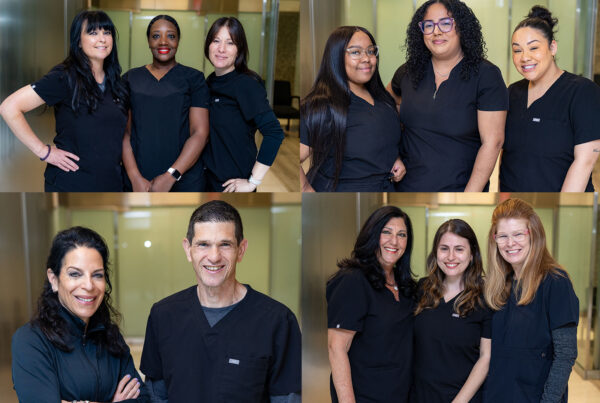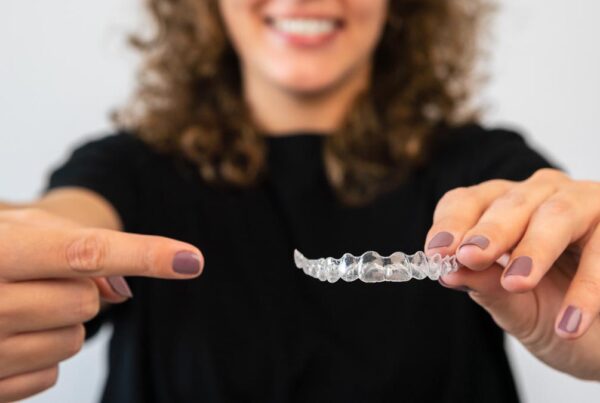 Porcelain is one of the most resilient dental materials, but even porcelain restorations cannot be expected to last forever. Eventually, damage, wear, or aesthetic changes will likely necessitate the replacement of such restorations. When it comes to time to replace porcelain veneers, it’s helpful to understand what that process entails. Moreover, we encourage our Philadelphia patients to learn the various factors that may reduce the lifespan of their veneers. Use the information below as a guide for protecting your veneers and, when their lifespan is finally up, knowing what to expect from a replacement procedure.
Porcelain is one of the most resilient dental materials, but even porcelain restorations cannot be expected to last forever. Eventually, damage, wear, or aesthetic changes will likely necessitate the replacement of such restorations. When it comes to time to replace porcelain veneers, it’s helpful to understand what that process entails. Moreover, we encourage our Philadelphia patients to learn the various factors that may reduce the lifespan of their veneers. Use the information below as a guide for protecting your veneers and, when their lifespan is finally up, knowing what to expect from a replacement procedure.
Why Might Porcelain Veneers Require Replacement?
When porcelain veneers are kept safe and clean, they will barely accrue any damage or stains over time. In many cases, veneers can last 15 years or longer before any significant changes are noticed. Still, a handful of factors are commonly noted as playing a role in the sudden or gradual decline of a veneer:
- Tooth decay: If a tooth develops a cavity or similar complications, any restorations will have to be removed or destroyed in the treatment process. Once the restorative treatment is complete, a new veneer will need to be created and placed.
- Chips or cracks: Porcelain can be brittle under unnatural or excessive force, resulting in noticeable chips and cracks. This may occur from sudden impact during an injury or accident, or it may be from a more natural source such as teeth grinding or biting into a hard object.
- Staining: Porcelain is far more stain resistant than other dental materials and even natural enamel, but it’s possible for discoloration to occur over time, especially from lack of hygiene or tobacco use.
- Gradual wear: Even if your veneers do not suffer immediate or extensive damage, small chips and regular usage will add up over time, gradually wearing them down in shape and size.
In some cases, patients may also want to consider replacement if veneers no longer match the rest of a smile. This may be due to discoloration of neighboring teeth or in conjunction with teeth whitening, which does not affect porcelain restorations.
The Replacement Process
The replacement process for porcelain veneers is similar to the original installation procedure. When you are ready for replacement to begin, you will undergo the following steps:
- First, the original veneer must be removed.
- Impressions will then be taken of the tooth, which are subsequently sent to a lab where the new veneer will be created.
- When the new veneer is ready, you will be called back for a second appointment. You will be given a temporary veneer to cover the tooth and fill out your smile in the meantime.
- During your second visit, the veneer will be placed over your tooth and evaluated for fit. Assuming it is a good fit, it will be permanently cemented onto the tooth, just like the previous one.
The entire process usually takes a week or two, with the majority of wait time dependent upon how long it takes the lab to create your veneer(s). Once the replacement veneer is cemented on, you can return to your regular habits without any changes to your lifestyle.
Extending the Lifespan of Your Veneers
Porcelain veneers do not typically require any special care outside of what you should provide for your regular teeth. However, there are certainly some considerations to keep in mind if you want your veneers to last as long as possible:
- Maintain good, thorough hygiene on a daily basis
- Drink water with meals to wash away food particles and neutralize acids
- Abstain from tobacco use
- Wear a mouth guard during contact sports
- Do not use your teeth as tools for non-food items
- Do not chew on non-food items, such as your nails
- Consider wearing a night guard if you suffer from teeth grinding (bruxism)
For more information on how to making your veneers last, speak with your cosmetic dentist.
Schedule an Appointment
Dr. Leas and Dr. Siegel are committed to helping you achieve a full, beautiful smile. Do not hesitate to contact us with any questions or concerns regarding a recent or upcoming appointment. To schedule a new appointment with us, simply call or email our office at your convenience.



